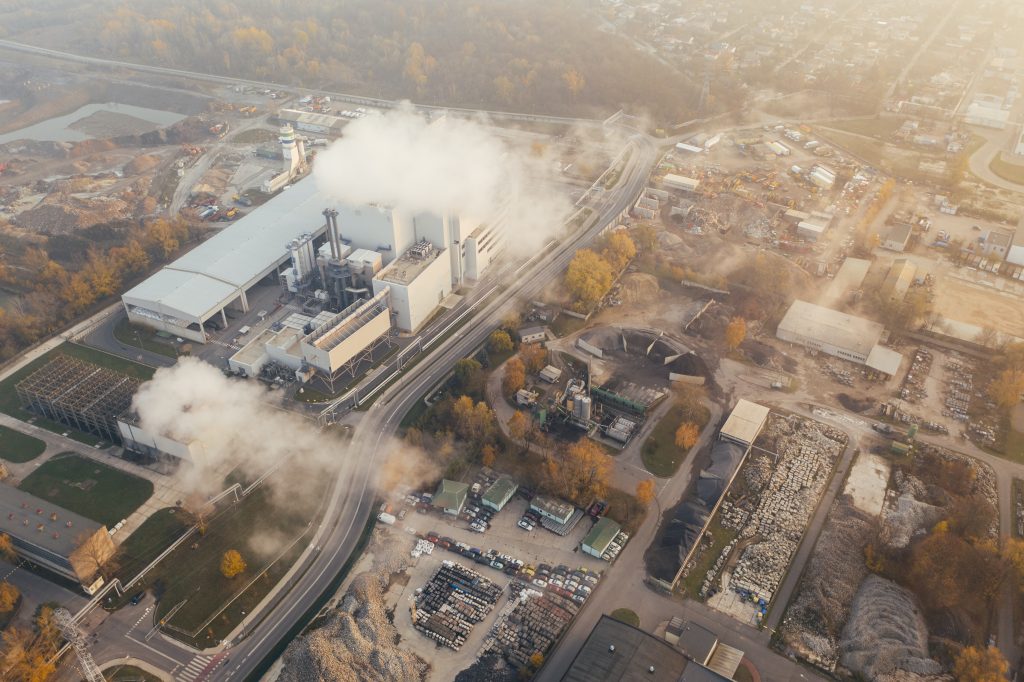Hydrogen is a hot topic across the world now. But would it ever be green enough to become the primary energy source for most industries? Critics say it’s neither efficient nor sustainable enough. However, some types of hydrogen are indispensable to climate neutrality, and hydrogen features in all eight of the European Commission’s net-zero emissions scenarios for 2050. In theory, hydrogen can do three things – speed up the decarbonization of the hard-to-electrify sectors like long-distance transportation and heavy industries, store surplus renewables power when the grid cannot absorb it, and replace fossil fuels as a zero-carbon feedstock in chemicals and fuel production.

What is hydrogen? Its chemical formula is H2, and it is the lightest element with no color, taste, or odor. Most hydrogen on Earth exists in molecular forms such as water and organic compounds (proteins, methane, butane, hydrocarbons, etc.). Hydrogen is the most abundant substance in their universe. Hydrogen is part of climate discussions for industries that are hard to decarbonize in other ways – trucking, airplanes, electricity storage. When you burn hydrogen, energy is generated in the form of heat, but it requires energy to make the hydrogen in the first place. When it burns, the only by-product is water. Hydrogen energy generates no carbon dioxide to warm the atmosphere, making hydrogen one of the many potential energy sources that could reduce carbon emissions and slow global warming.
But before we can get energy from hydrogen, we need to produce hydrogen in the first place as hydrogen atoms don’t exist on their own – they are stuck to another atom or other element. Creating hydrogen means breaking those molecular bonds, and this process requires energy and is not always efficient and cheap compared with other forms of energy.
Hydrogen is referred to by various colors illustrating how it was produced. In the energy business, it is a well-known approach.
One of the ways of making hydrogen is an electrolysis process when electricity is passed through a substance to force a chemical change – in our case, splitting H2O into hydrogen and oxygen.
Green hydrogen is created when the energy used to power electrolysis comes from renewable sources like wind, water, or solar. Green hydrogen could help us cut our carbon footprint if it overcomes hurdles.
Blue hydrogen is created from natural gas with steam methane reforming, where natural gas is mixed with hot steam and a catalyst. The occurring chemical reaction produces hydrogen and carbon monoxide. Then, water is added to that mixture, turning the carbon monoxide into carbon dioxide and hydrogen. If the carbon dioxide emissions are then captured and stored underground, the process is considered carbon-neutral, and the resulting hydrogen is called ‘blue hydrogen.’
There is some controversy over blue hydrogen because carbon capture and storage technology are relatively new, and some experts are very skeptical about storing emissions underground. Also, natural gas production inevitably results in methane emissions or so-called fugitive emissions (methane losses from leaks of drilling, extraction, and transportation process).
Carbon dioxide lasts longer in the atmosphere than methane, but methane is more potent than a greenhouse gas. According to the International Energy Agency, one ton of methane can be equivalent to 28 to 36 tons of carbon dioxide over 100 years.
Grey hydrogen is produced from natural gas in the same way as blue hydrogen but without any attempts to capture carbon dioxide byproducts.
Pink hydrogen is hydrogen made with electrolysis powered by nuclear energy, so no carbon dioxide is produced in the process. However, nuclear energy creates radioactive waste, which must be stored safely for thousands of years.
Yellow hydrogen’s production is powered by electrolysis from the energy grid. Sources powering the grid considerably affect the carbon emissions.
Turquoise hydrogen is hydrogen made from methane pyrolysis, splitting methane into hydrogen and solid carbon with heat in reactors or blast furnaces. Turquoise hydrogen is still in its nascent stages of being commercialized. Its climate efficiency broadly depends on the energy source used for pyrolysis, what is happening with physical carbon, and how it is stored and managed.
As you can see, the color scheme for hydrogen marking is a bit simplistic approach, and it is not getting to the critical issue with hydrogen – what are the side effect of hydrogen production.

Hydrogen is already a key component of chemical industrial processes and the steel industry. It is critical to make clean hydrogen to use in those industrial processes to reduce carbon emissions. Clean hydrogen can play a key role in decarbonizing the industrial heavy transportation industry, like trucking, planes, and big industrial boats. It is widely debated that hydrogen will not be broadly implemented for smaller consumer vehicles as electric cars are being adopted more. However, bigger vehicles would require larger batteries which would lead to an increased weight which would result in increased energy use. Hydrogen can become a solution to this equation.
Hydrogen can also be used to alternatively store energy from intermittent renewable sources as the sun isn’t shining and the wind isn’t blowing all the time permanently. Renewable energy sources suffer from supply and demand imbalances. Excess energy can be transformed into hydrogen and then used later. Hydrogen energy storage is a process wherein the surplus of energy created by renewables during low energy demand periods is used to power electrolysis for hydrogen production. Once hydrogen is produced, it can be used in stationary cells, for power generation, to provide fuel for fuel cell vehicles, injected into natural gas pipelines to reduce their carbon intensity, or even stored as a compressed gas, cryogenic liquid, or wide variety of loosely-bonded hydride compounds for later use.
There are other forms of energy storage, such as batteries and pumped water storage facilities, which can serve the energy storage needs. However, both have limitations that hydrogen can overcome. Batteries suffer from storage degradation, and their capacity is limited. At the same time, hydrogen fuel can be stored for a longer time, and only the size of storage facilities limits its capacity. Pumped water storage is not limited by the duration or capacity of chemical batteries. Still, it can be used only in limited geographic areas with mountains and hills with vast land massive.
Energy-intensive industries are the biggest hydrogen consumers today. Europe aims to become the first climate neutral continent by 20250, and, consequently, interest in clean hydrogen is growing from such industries as steel and chemicals (fertilizer production and oil refining use more than half of all hydrogen worldwide). These are incredibly price-sensitive industries exposed to global competition. Companies are not intended to pay several times for a climate-friendly alternative such as clean hydrogen. Also, the steel industry is still based on coal, and its assets are aging, so bold political decisions could help the European industry to rebuild its assets to run on the gas until the mid-2030s and then switch to clean hydrogen.
Private cars are not expected to run on hydrogen in the future as they are widely considered to go electric. Instead, heavy transport is where significant changes could be made. Trucks makers and logistics giants like Volvo, Daimler, Deutsche Post DHL, and Schenker suggest the future of freight is electric and, for the long haul, electric plus hydrogen. Electrics trucks are available today, and that’s the main advantage.
Industry experts argue that blue hydrogen is essential to build up a market for what ultimately be green hydrogen. However, the climate experts have a different opinion. From a climate perspective, blue hydrogen depends on CCS (carbon capture and storage) and natural gas, bringing some problems to the table. CCS remains an aspiration rather than a reality, and carbon capture can never be fully efficient. Moreover, upstream methane leakage has an uncertain impact on the climate. Methane is the essential short-lived climate pollutant. It is estimated that methane emissions in 2020 will cause around half of global warming over the next 20 years. At the same time, the oil and gas industry is the second most significant source of methane emissions after agriculture.
There is an opportunity for hydrogen to become a game-changer in the energy sector. However, we are still working towards a fast transition, and it is not about the laws of thermodynamics but the question if society will be willing to pay for positive climate changes. As always, I am posting some references which get me inspired about hydrogen.
